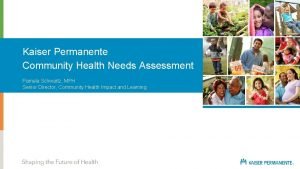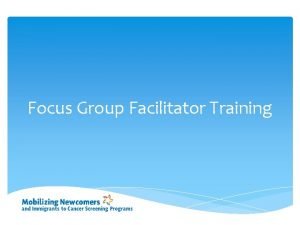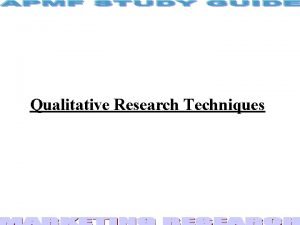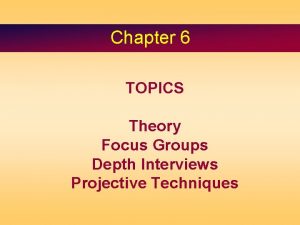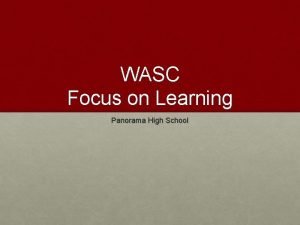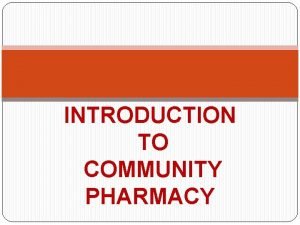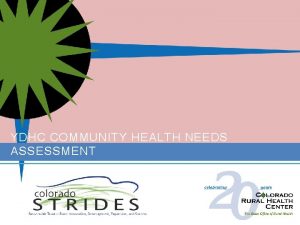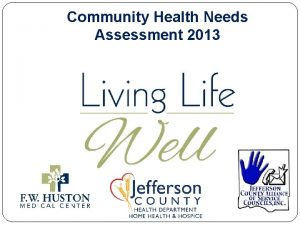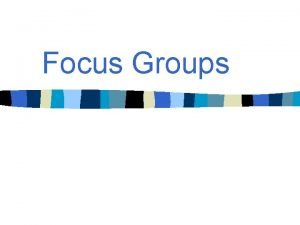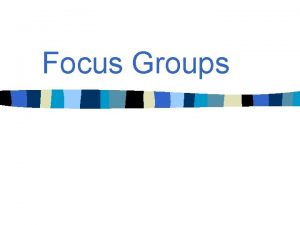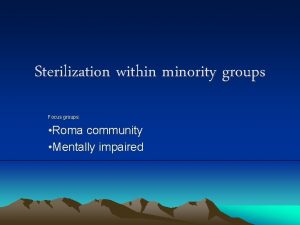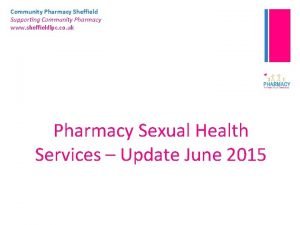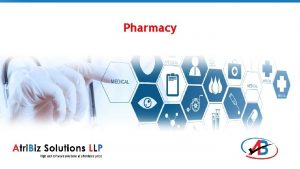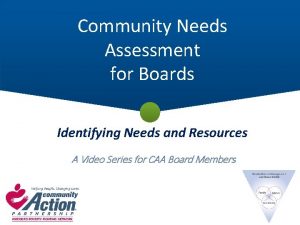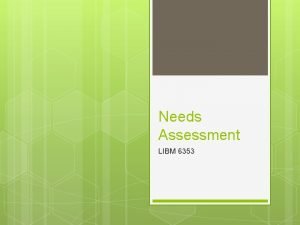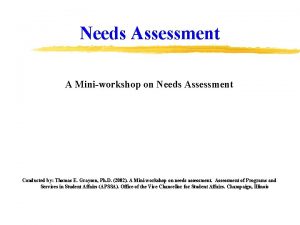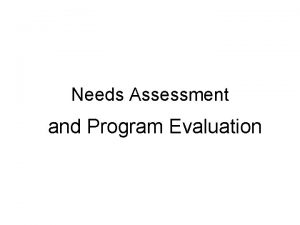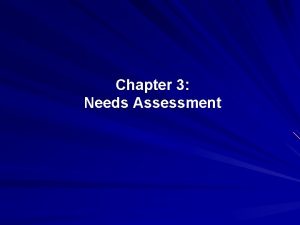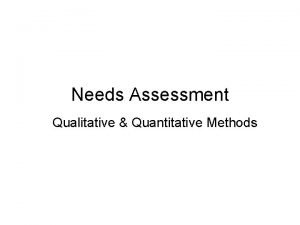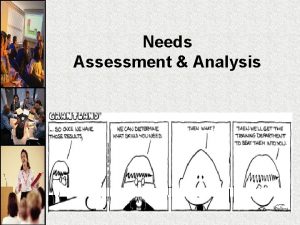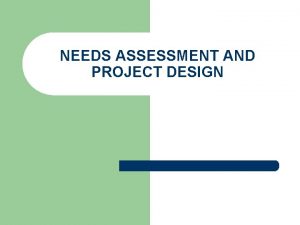Pharmacy Needs Assessment Community Pharmacy Focus Groups Agenda





















- Slides: 21

Pharmacy Needs Assessment Community Pharmacy Focus Groups

Agenda v Welcome & Introductions v Background to Pharmacy Needs Assessment v Pharmacy Needs Assessment Process v Overview of Pharmacy Services v Focus Group Questions 1 – User Needs v Overview of Benchmarking v Focus Group Questions 2 - Benchmarks v Focus Group Questions 3 - Provider Survey v Close 2

Background v 3 ‘Pharmacy’ Judicial Reviews since 2009 Following JR 2: Margin survey, cost survey, needs assessment v 2013 -2017 – Preliminary needs assessment concluded v April 2018 – HSCB instructed to carry out formal needs assessment v August 2018 – Draft PID developed v November 2018 – Project Board Formed

Pharmacy Needs Assessment Aim: v To understand if pharmacy services are currently being offered in the right places to meet the needs of the local communities they serve. 4

Overview of Services v Currently 531 community pharmacies across Northern Ireland v Health and Social Care Board (HSCB) manages the health service contracts with community pharmacies v HSCB funds a range of services delivered by community pharmacies – ‘commissioned services’ v Community pharmacies also typically offer a range of other services which are not funded by the HSCB – ‘noncommissioned services’ 5

Overview of Services Commissioned Services Non-Commissioned Services Prescription Dispensing Over the counter services Advice on a health problem Prescription collection service Minor ailment service Prescription delivery service Disposing of medicines and sharps Compliance aid support Prescription advice Health checks (e. g. blood pressure, cholesterol, diabetes checks) Medicines use review Flu vaccine Advice on a more healthy lifestyle Travel clinics Stop smoking scheme Sun safety Needle exchange Emergency contraception Substitute prescribing Palliative care service 6

Key Areas of Work to Date: 1. Statistical data analysis: Ø Population needs Ø Pharmacy provision 2. Wider Public and Provider Engagement: Ø Technical Advisory Groups Ø Local Commissioning Groups & Council Community Planning Teams Ø Public survey – hard copy and online Ø Focus groups – ongoing 7

Statistical Data Analysis • Review: Ø Previous PNA work by DH, HSCB and CPNI Ø Deloitte Review Ø UK PNAs • Data: Ø Population Need, Current Service Provision Ø Comprehensive Data Catalogue Ø Structured Ø Census Super Output Area (SOA) level 8

Population Need • 3 Components: Ø Population size Ø Age and Gender Ø Additional Needs • Includes patient demography, life conditions & socioeconomic circumstances, lifestyle choices, morbidity/disease prevalence, prescribing utilisation • Regression Modelling • Currently based on Prescription Dispensing 9

Current Service Provision • Commissioned/Non Commissioned Services • Update and QA pharmacy and health service locational information • Travel Distances and times Ø Residing Population Ø Pharmacies Ø GP Practices 10

Modelling Tool • “One Stop Shop” • Tableau • Dynamic software • Considerable data preparation • Used to evaluate: 11 Ø Identify Benchmarks Ø Current need and provision against benchmarks Ø Provides guidance for further investigation

Tableau Modelling Tool

Tableau Modelling Tool

Tableau Modelling Tool

Public Survey - Initial Findings v Almost 1, 700 responses to date. v Most respondents use a ‘regular pharmacy’, the majority of whom (80%) attend in person and can access within 15 minutes. v A small number surveyed (4%) use a delivery service. v Pharmacy opening hours and the range of services available appear to be largely meeting needs. v Prescription dispensing is the most used of all services with 90% of respondents reporting using this service. 15

Group Discussion 1 - Needs 1. What Pharmacy services should be recognised as part of the Needs Assessment process? 2. With regards to these services, what is the patient need being addressed? 3. Is there any difference in need between commissioned and non-commissioned services? 16

Benchmarks – Example 1 Pharmacies with 1 mile radius buffer 17

Benchmarks – Example 2 Drive Time to Pharmacies 18

Group Discussion 2 - Benchmarks 1. What factors should be taken into consideration when looking at access? 2. How should these factors be adjusted for different population areas e. g. urban, rural? 3. What does ‘good’ access look like? 4. What about opening hours? 19

Provider Survey - Discussion v Proposed provider survey to include: Ø Non-commissioned service provision Ø Opening hours Ø Capacity v Feedback: Ø Approach? Ø Can the above items be quantified / measured? Ø Timelines? 20

Close v Thank you for your participation 21
 Community needs assessment steps
Community needs assessment steps Pamela schwartz kaiser
Pamela schwartz kaiser Focus on form vs focus on forms
Focus on form vs focus on forms Porters strategies
Porters strategies Drivers of differentiation
Drivers of differentiation Actor focus vs object focus
Actor focus vs object focus Focus group facilitator
Focus group facilitator Postal questionnaire
Postal questionnaire Research technique
Research technique Focus group advantages and disadvantages
Focus group advantages and disadvantages Strengths of focus groups
Strengths of focus groups Advantage of focus groups
Advantage of focus groups Focus group advantages
Focus group advantages Advantages of focus groups
Advantages of focus groups Wasc focus groups
Wasc focus groups Focus group objectives
Focus group objectives Agenda sistemica y agenda institucional
Agenda sistemica y agenda institucional How are ethnic groups and religious groups related
How are ethnic groups and religious groups related Primary needs and secondary needs
Primary needs and secondary needs Primary needs and secondary needs
Primary needs and secondary needs Simple claustral complex
Simple claustral complex Strategic gender needs and practical gender needs
Strategic gender needs and practical gender needs

